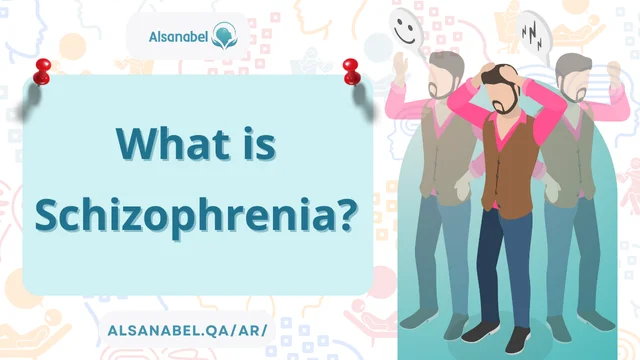
Post-traumatic stress disorder (PTSD) is a mental health condition that can profoundly impact an individual’s daily life and emotional well-being. Despite being widely recognized, it remains a misunderstood condition for many. This article explores the symptoms of PTSD, providing detailed insights into the physical, emotional, and behavioral signs, as well as how to identify and address them effectively. By understanding these symptoms, you can support yourself or someone you know in navigating this challenging condition.
What is PTSD?
PTSD is a psychological response to a traumatic event, such as an accident, natural disaster, combat, or personal assault. This condition disrupts the brain’s ability to process the trauma, leading to intrusive thoughts, overwhelming emotions, and behavioral changes. These challenges can manifest differently from person to person, making it essential to recognize both obvious and subtle indicators.

Recognizing the Signs
Flashbacks and Intrusive Memories
One of the hallmark features of PTSD is the presence of flashbacks or recurring intrusive memories of the traumatic event. These can occur at any time, often triggered by sounds, smells, or situations that remind the individual of the incident. Flashbacks may feel so real that the person experiences the trauma as if it is happening again in the present moment.
Nightmares and Sleep Disturbances
Many people with PTSD suffer from nightmares that replay the traumatic event or reflect their deep fears and anxieties. These frequent disturbances in sleep can lead to chronic fatigue and make it challenging to function during the day.
Avoidance Behaviors
Avoidance is another common reaction. Those with PTSD may actively steer clear of places, people, or activities associated with the trauma. While this strategy may temporarily reduce stress, it often intensifies isolation and emotional distress in the long term.
Diving Deeper into the Symptoms
Physical Symptoms
The physical symptoms of PTSD are closely tied to the body’s heightened state of alertness. Often referred to as hyperarousal, this state can result in:
- Increased heart rate
- Rapid breathing
- Muscle tension
- Sweating
- Digestive issues
These physical manifestations are a direct result of the brain’s fight-or-flight response, which remains activated even in the absence of immediate danger.
Emotional Symptoms
The emotional symptoms of PTSD are often more challenging to identify. They include feelings of:
- Guilt or shame, particularly survivor’s guilt
- Irritability or outbursts of anger
- Emotional numbness or detachment from loved ones
- A pervasive sense of fear or helplessness
These feelings can lead to significant strain on personal relationships and hinder daily functioning.
Behavioral Changes
People with PTSD often display changes in behavior, including an increased tendency toward reckless actions or self-destructive habits. This might include substance abuse, withdrawal from social settings, or engaging in dangerous activities as a coping mechanism.
Causes and Triggers
While PTSD can result from a wide range of traumatic experiences, certain triggers tend to exacerbate the symptoms. These triggers may be specific (e.g., a loud noise) or generalized (e.g., crowded spaces). Recognizing these triggers is an essential step in managing and alleviating the condition.
Diagnosis and Evaluation
Identifying PTSD Symptoms in Clinical Settings
Diagnosing PTSD involves a thorough psychological assessment. Mental health professionals often use structured interviews and diagnostic tools, such as the DSM-5 criteria, to determine whether someone meets the necessary conditions for PTSD. The evaluation process also includes a detailed discussion of the traumatic event and its impact on the individual’s daily life.
Signs of PTSD
The signs of PTSD are typically grouped into four categories:
- Intrusion symptoms such as flashbacks and nightmares.
- Avoidance symptoms, including steering clear of trauma reminders.
- Cognition and mood symptoms, such as negative thoughts or memory issues.
- Arousal and reactivity symptoms, like being easily startled or experiencing heightened irritability.
Each person may exhibit a unique combination of these signs, which can fluctuate over time.
Treatment and Recovery
Therapeutic Interventions
Treatment for PTSD typically combines therapy and medication. Cognitive-behavioral therapy (CBT) is one of the most effective approaches, helping individuals reframe negative thought patterns and develop healthier coping strategies. Eye Movement Desensitization and Reprocessing (EMDR) is another widely used technique to address trauma memories.
Medication for PTSD Symptoms
Medications, such as selective serotonin reuptake inhibitors (SSRIs), can alleviate symptoms like anxiety and depression. However, these are often used in conjunction with therapy rather than as standalone treatments.
Self-Help and Coping Strategies
In addition to professional treatment at at Al Sanabel Specialized Psychiatric Center In Qatar, self-care practices can make a significant difference. Exercise, mindfulness meditation, and maintaining a strong support network are all helpful tools for managing PTSD. Journaling and creative outlets, like art or music, can also provide therapeutic benefits.
FAQs: Common Concerns About PTSD

1. What are the common symptoms of PTSD?
The most frequent symptoms include flashbacks, nightmares, hyperarousal, avoidance behaviors, and emotional numbness. These can vary in intensity and duration among individuals.
2. How is PTSD diagnosed?
PTSD is diagnosed through psychological evaluations that focus on the individual’s symptoms, trauma history, and their impact on daily life. Professionals use diagnostic criteria from established resources like the DSM-5.
3. What are the treatment options for PTSD?
Treatment options include therapy (CBT or EMDR), medications such as antidepressants, and lifestyle modifications. A combination of these methods is often most effective.
4. Can PTSD occur after a car accident?
Yes, PTSD can develop after any traumatic event, including car accidents. Survivors may experience flashbacks, anxiety, and other PTSD symptoms related to the accident.
5. How can I help someone with PTSD?
Support involves active listening, encouraging professional help, and being patient with their healing process. Avoid judgment and respect their boundaries while providing a safe and understanding environment.
The symptoms of PTSD are multifaceted and can affect various aspects of life. Recognizing the physical symptoms of PTSD, alongside its emotional and behavioral indicators, is essential for early intervention and effective management. By understanding these symptoms and their triggers, individuals and their loved ones can seek timely treatment and foster an environment that promotes healing and resilience.


